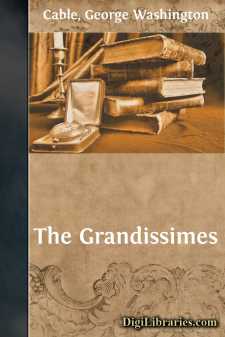Categories
- Antiques & Collectibles 13
- Architecture 36
- Art 48
- Bibles 22
- Biography & Autobiography 813
- Body, Mind & Spirit 142
- Business & Economics 28
- Children's Books 15
- Children's Fiction 12
- Computers 4
- Cooking 94
- Crafts & Hobbies 4
- Drama 346
- Education 46
- Family & Relationships 57
- Fiction 11828
- Games 19
- Gardening 17
- Health & Fitness 34
- History 1377
- House & Home 1
- Humor 147
- Juvenile Fiction 1873
- Juvenile Nonfiction 202
- Language Arts & Disciplines 88
- Law 16
- Literary Collections 686
- Literary Criticism 179
- Mathematics 13
- Medical 41
- Music 40
- Nature 179
- Non-Classifiable 1768
- Performing Arts 7
- Periodicals 1453
- Philosophy 64
- Photography 2
- Poetry 896
- Political Science 203
- Psychology 42
- Reference 154
- Religion 513
- Science 126
- Self-Help 84
- Social Science 81
- Sports & Recreation 34
- Study Aids 3
- Technology & Engineering 59
- Transportation 23
- Travel 463
- True Crime 29
Dr. Sevier
Description:
Excerpt
CHAPTER I.
The main road to wealth in New Orleans has long been Carondelet street. There you see the most alert faces; noses—it seems to one—with more and sharper edge, and eyes smaller and brighter and with less distance between them than one notices in other streets. It is there that the stock and bond brokers hurry to and fro and run together promiscuously—the cunning and the simple, the headlong and the wary—at the four clanging strokes of the Stock Exchange gong. There rises the tall façade of the Cotton Exchange. Looking in from the sidewalk as you pass, you see its main hall, thronged but decorous, the quiet engine-room of the surrounding city’s most far-reaching occupation, and at the hall’s farther end you descry the “Future Room,” and hear the unearthly ramping and bellowing of the bulls and bears. Up and down the street, on either hand, are the ship-brokers and insurers, and in the upper stories foreign consuls among a multitude of lawyers and notaries.
In 1856 this street was just assuming its present character. The cotton merchants were making it their favorite place of commercial domicile. The open thoroughfare served in lieu of the present exchanges; men made fortunes standing on the curb-stone, and during bank hours the sidewalks were perpetually crowded with cotton factors, buyers, brokers, weighers, reweighers, classers, pickers, pressers, and samplers, and the air was laden with cotton quotations and prognostications.
Number 3½, second floor, front, was the office of Dr. Sevier. This office was convenient to everything. Immediately under its windows lay the sidewalks where congregated the men who, of all in New Orleans, could best afford to pay for being sick, and least desired to die. Canal street, the city’s leading artery, was just below, at the near left-hand corner. Beyond it lay the older town, not yet impoverished in those days,—the French quarter. A single square and a half off at the right, and in plain view from the front windows, shone the dazzling white walls of the St. Charles Hotel, where the nabobs of the river plantations came and dwelt with their fair-handed wives in seasons of peculiar anticipation, when it is well to be near the highest medical skill. In the opposite direction a three minutes’ quick drive around the upper corner and down Common street carried the Doctor to his ward in the great Charity Hospital, and to the school of medicine, where he filled the chair set apart to the holy ailments of maternity. Thus, as it were, he laid his left hand on the rich and his right on the poor; and he was not left-handed.
Not that his usual attitude was one of benediction. He stood straight up in his austere pure-mindedness, tall, slender, pale, sharp of voice, keen of glance, stern in judgment, aggressive in debate, and fixedly untender everywhere, except—but always except—in the sick chamber. His inner heart was all of flesh; but his demands for the rectitude of mankind pointed out like the muzzles of cannon through the embrasures of his virtues....












